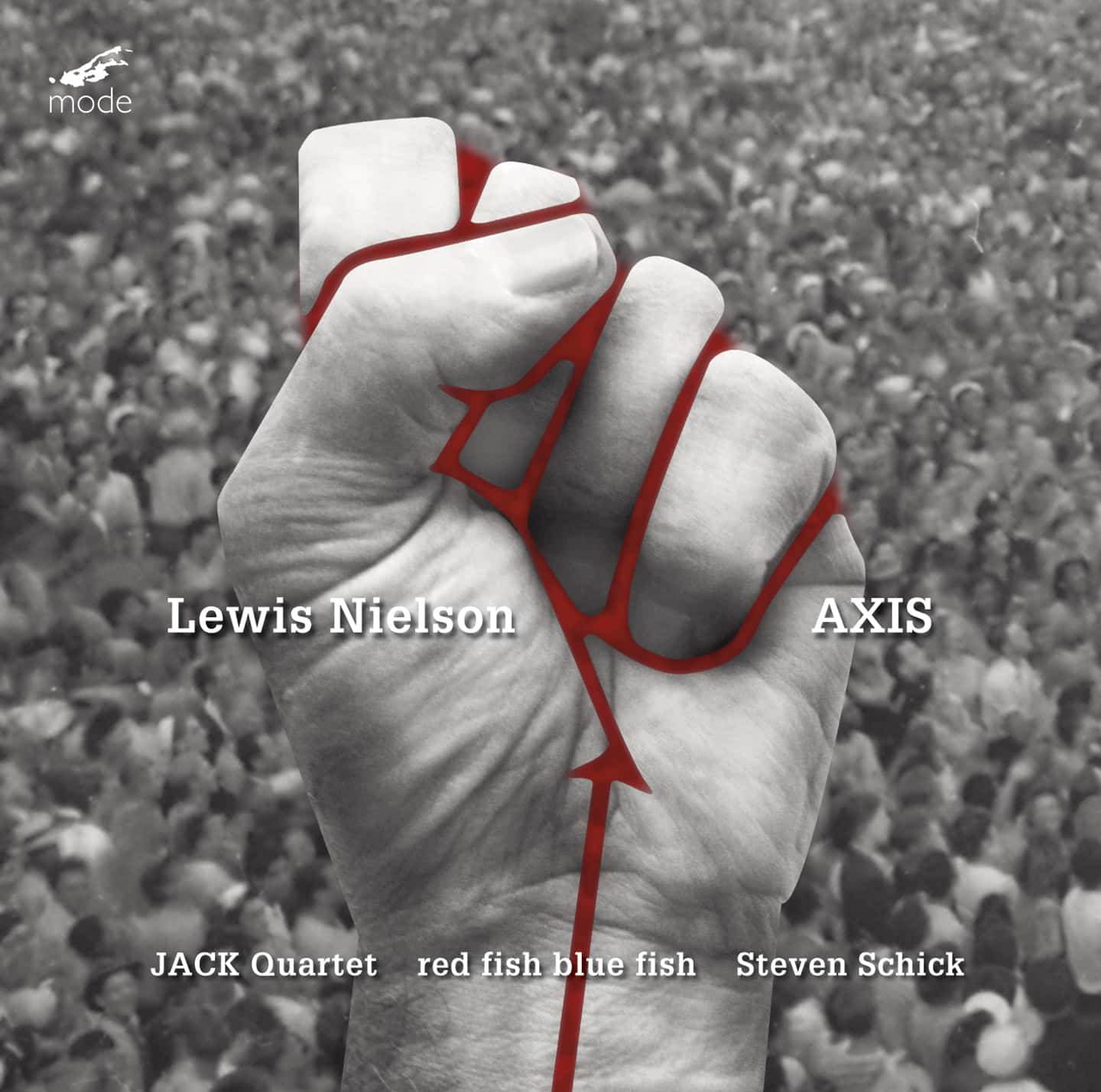AXIS
Hear Album samples
AXIS
Le Journal du Corps (2010) 23:43
for string quartet
The JACK Quartet
Tocsin (2009) 21:17
for six percussionists
red fish blue fish
Steven Schick, conductor
Axis (Sandman) (2005) 14:22
for solo percussion and string quintet
Steven Schick, percussion
The JACK Quartet
Emily DuFour, cello
Nicholas DeMaison, conductor
The music of American composer Lewis Nielson can be associated with European composers like Helmut Lachenmann or Salvatore Sciarrino, while forging a distinctive approach to form that is at once lyrical, sensitive, and somehow picturesque. But Nielson is not the typical born and bred academic composer. For a time, he played guitar in garage rock and blues bands, and spent a fair amount of time adrift in spells of youthful resistance.
Nielson, a former Professor of Composition at Oberlin College Conservatory of Music, is highly regarded by his colleagues and students. This is proven by the stellar performers here, including Steven Schick and the JACK Quartet.
Axis, for solo percussion and string quintet, is a nearly constant swirl of sound, pixilated into discrete gestures.
Tocsin is for six percussionists. The arresting synchronicity heard at the opening (and several times again over the course of the work) is intended to index the sound of a crowd at the verge of popular revolution. The crowd, as we can hear, repeatedly takes shape only to collapse and cool off into contrapuntal pattering; again gathering their strength to reassemble only to inevitably collapse back into idle
murmurings.
Le Journal du corps for string quartet, begins with minutes of collaged schizophrenia followed by striking moments of harmonic repose and the elegant stillness of non-vibrato chords. Nielson’s striking decision has the string players sing just four minutes before the ending; amateur voices from the professional string quartet. The lyrics are from a play by the Negritude poet, Aimé Césaire, and reference what Nielson describes as “the destructive power of corporate oligarchy in an increasingly rapacious capitalist environment.” Césaire’s text, produced here, provides an uncanny militancy to the Journal’s voices, as exposed indices of un-alienated labor, bearing the quartet’s secret message.
All works are composer supervised first recordings.
Liner notes by Michael Gallope.
Reviews
The Oberlin-based composer has a strong new disc on Mode.
– Alex Ross, The Rest Is Noise, 19 May 2015, http://www.therestisnoise.com/2015/05/lewis-nielson.html
It’s difficult to convey political meaning solely through music, but American composer Lewis Nielson attempts that in Tocsin, a percussion piece depicting how revolutionary union, as represented by the opening drum processional, frequently dissipates into more conversational alliances. Performed by the ensemble red fish blue fish, it’s a vivid tour-de-force of percussive variety. The string quartet piece Le Journal Du Corps takes a different approach, with seemingly unrelated dabs of sound that accrete in suggestive ways. Then the players murmur lines from an Aime Cesaire play about slavery, reconfiguring the music as a body, under the yoke of capitalism. It’s a vibrant work which demonstrates the engrossing capacity of supposedly abstract music.

— Andy Gill, The Independent, 11 July 2015
Stephen Brookes from the Washington Post describes Nielson’s 2010 quartet Le journal du corpsas music that “almost whispered, drawn in quiet gestures that echoed the human agonies it explored and coalesced finally into an exalting movement that had the grace of a communal prayer. In short, a work of serene dignity and subtle emotional power, as spiritual as it was political.”
In the liner notes for this CD, author Michael Gallope states: “Each (work) remains militantly faithful to the bleak and quiet negativity one might associate with European composers like Helmut Lachenmann or Salvatore Sciarrino, while forging a distinctive approach to form that is at once lyrical, sensitive, and somehow picturesque. Close listening often reveals a tense and occasionally gripping sense of control over a vastly detailed landscape, with certain fragments and short episodes positioned quite unexpectedly, in ways that invite interpretive scrutiny. An array of referents comes to mind: broken toys, alien objects, twisted wires, dancing animals, sacred choral meditations, the magical clang of rituals. Indeed, Nielson’s sound world is a strange landscape of objects and events that are often vividly pictorial. They unfold in a vast empty space; unlike some of the composer’s earlier works, there are few hints of narrative or transformation.”
http://composers.com/node/11866, July 2015

